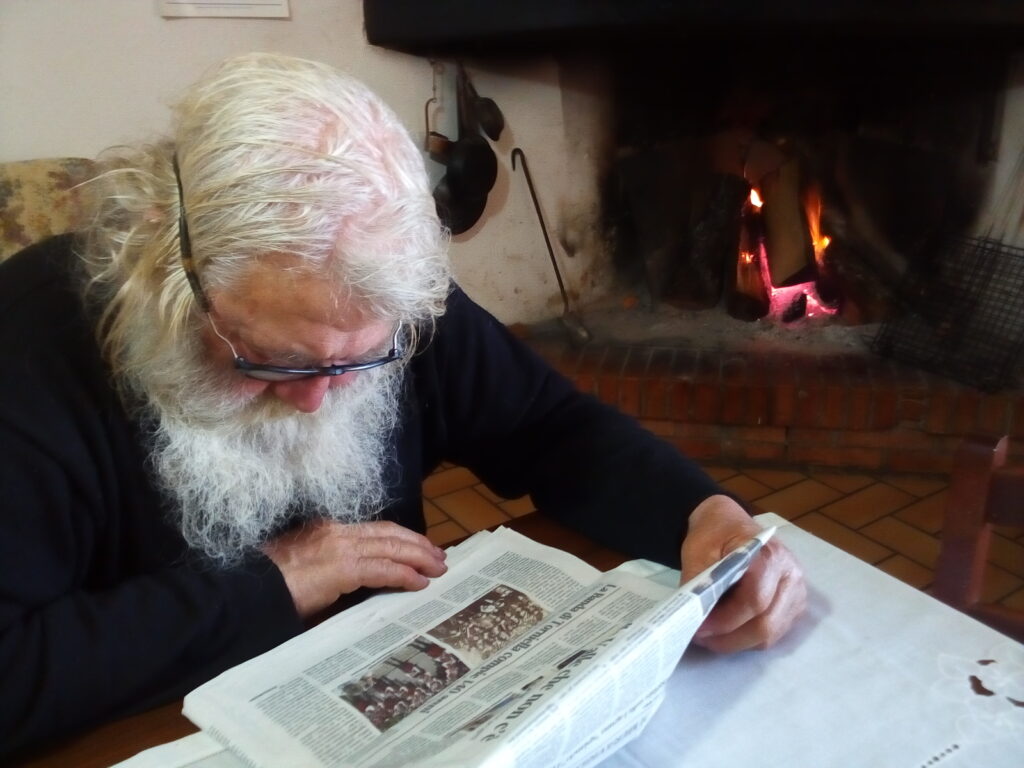Pietro “Raman” Crivelli has been collaborating with the pibinko.org network since 2011. Mostly in music-related situations, but not only. You may look up his appearances both on the main pibinko.org site, as well as in the Jug Band Colline Metallifere site (look for Crivelli via the search engines in each site). Pietro is also a fine painter and decorator. Before covering the Peter’s painting side, a little soundtrack by himself
Painter, decorator, and folk musician

Pietro Crivelli graduated at the Fine Arts Academy of Florence in 1974. In 1977 he had his first international exhibitions, in Amsterdam, The Netherlands, and in New York City.
In 1977 he left Italy for Asia and India for four years, relocated to Sicily in 1981-1982. Between 1982 and 1995 he was in the USA (California, Colorado, and Seattle, Washington), where he was active both as a painter and a decorator.
He then moved to Bali, where he continued his activity as an artist, painting also in India and Indonesia.
In 2010 he relocated back to Italy, moving in an area not far from Florence, his home town, but completely new for him: the Farma Valley, in the hills and off the beaten track, about 40 km South of Siena.
Here he continues is activities, combining his experiences, extremely varied and from different continents with the interaction with a local environment which maintains a very strong legacy with nature and with the history of Tuscany.
Being a fully-fledged artist, Pietro also has a consolidated track record as a musician and an entertainer: in 1971 he was one of the founding members of Whisky Trail, the first band in Italy to propose Irish folk music. He then left the group when he started his international travels, but was always active as a guitarist and bass player, with strong ties to folk, country music, blues and Afro-American spirituals.
Pietro will create original paintings, reproductions, trompe l’oeil and decorations using different techniques and in all sizes.
To contact Pietro: pietro.crivelli64@gmx.com , (+39) 366 4092413
Solo and collective exhibitions
1972, Florence, Italy, Le Pavoniere, Le Cascine
1973, Tokyo, Japan, Association Friends Italy-Japan
1974, Rome, Italy, Galleria Della Pigna,
1975, Prato, Italy (collective)
1977, Amsterdam, The Netherlands, International Etching Exhibition contest
1979, Pune, India, Music House, Koregoan Park (collective)
1988, Seattle, Washington USA, Torrefazione Italia Cafè.
1991, Seattle, Washington USA, Lawson Gallery (Collective)
1992-1995, Various private collections around the USA
1996, Florence, Italy, In club Editor
1997, Siena, Italy, Miasto Institute for Meditation (collective)
2001, Bali, Indonesia, Gaya Gallery (collective)
2002, Bali, Indonesia, Gaya Gallery, Recycled Art (collective)
2002, Bali, Indonesia, Biasa Gallery, Seminyak
2003, Singapore, Dauphin Gallery (collective)
2004, Milano, Italy, Navigli, East West Gallery
2005, Victoria, Australia, Q dos- Gallery, Lorne , Victoria (Collective)
2007, Warung Made, Seminyak, Bali, Indonesia. Solo exhibit “ The rice paddies”
2010, Tiruvannamalai , Rani’s Garden, Tamil Nadu, South India
2014, Siena, A cavallo dell’Anno, (Collective)
2015, Tatti, Italy (collective)
Awards
1977, Amsterdam, The Netherlands, Etching International Exhibition
First Prize etching: Train 833 at New York Grand Central
1979, Reggello, Italy, County award for oil painting




